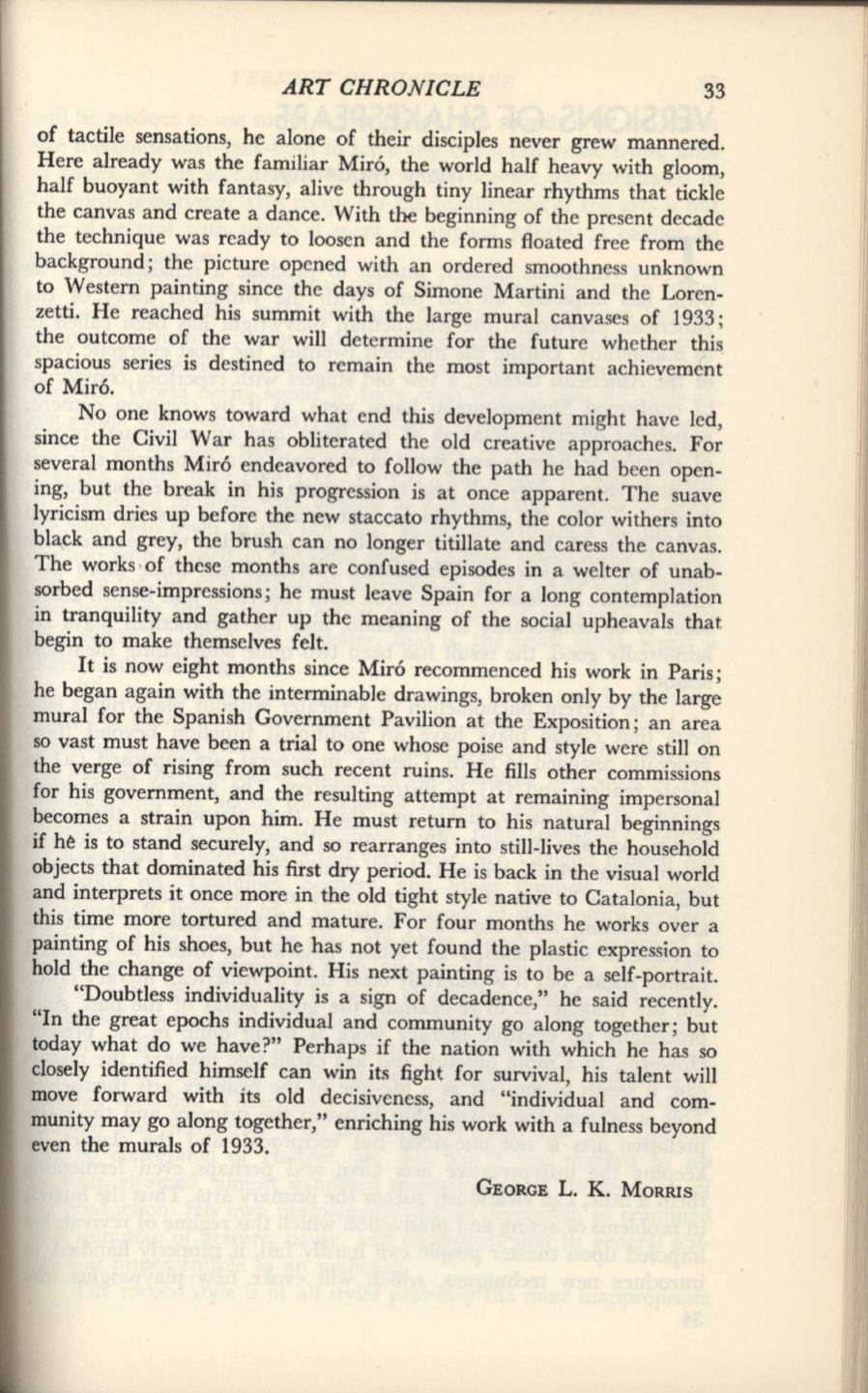
ART CHRONICLE
33
of tactile sensations, he alone of their disciples never grew mannered.
Here already was the familiar Mira, the world half heavy with gloom,
half buoyant with fantasy, alive through tiny linear rhythms that tickle
the canvas and create a dance. With the beginning of the present decade
the technique was ready to loosen and the forms floated free from the
background; the picture opened with an ordered smoothness unknown
to Western painting since the days of Simone Martini and the Loren-
zetti. He reached his summit with the large mural canvases of 1933;
the outcome of the war will determine for the future whether this
spacious series is destined to remain the most important achievement
of Mira.
No one knows toward what end this development might have led,
since the Civil War has obliterated the old creative approaches. For
several months Mira endeavored to follow the path he had been open-
ing, but the break in his progression is at once apparent. The suave
lyricism dries up before the new staccato rhythms, the color withers into
bla~k and grey, the brush can no longer titillate and caress the canvas.
The works-of these months are confused episodes in a welter of unab-
sorbed sense-impressions; he must leave Spain for a long contemplation
in tranquility and gather up the meaning of the social upheavals that
begin to make themselves felt.
It is now eight months since Mira recommenced his work in Paris;
he began again with the interminable drawings, broken only by the large
mural for the Spanish Government Pavilion at the Exposition; an area
so vast must have been a trial to one whose poise and style were still on
the verge of rising from such recent ruins. He fills other commissions
for his government, and the resulting attempt at remaining impersonal
becomes a strain upon him. He must return to his natural beginnings
if M is to stand securely, and so rearranges into still-lives the household
objects that dominated his first dry period. He is back in the visual world
and interprets it once more in the old tight style native to Catalonia, but
this time more tortured and mature. For four months he works over a
painting of his shoes, but he has not yet found the plastic expression to
hold the change of viewpoint. His next painting is to be a self-portrait.
"Doubtless individuality is a sign of decadence," he said recently.
"In the great epochs individual and community go along together; but
today what do we have?" Perhaps if the nation with which he has so
closely identified himself can win its fight for survival, his talent will
move forward with its old decisiveness, and "individual and com-
munity may go along together," enriching his work with a fulness beyond
even the murals of 1933.
GEORGE
L. K.
MORRIS


